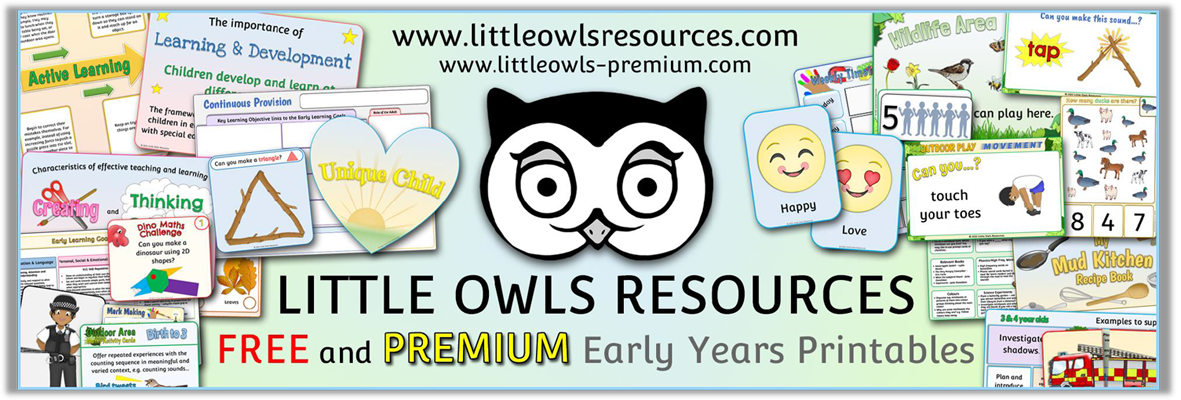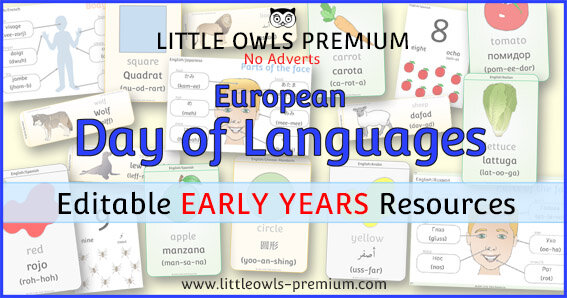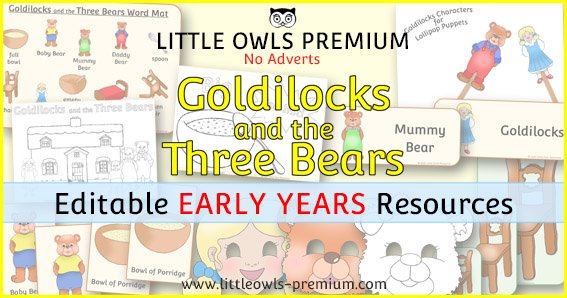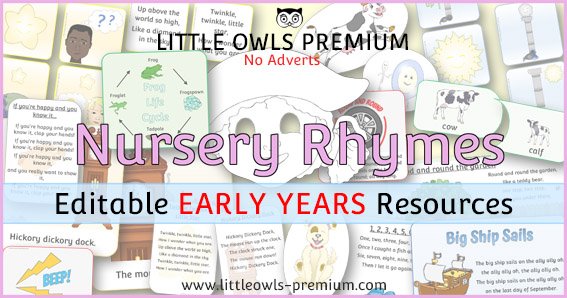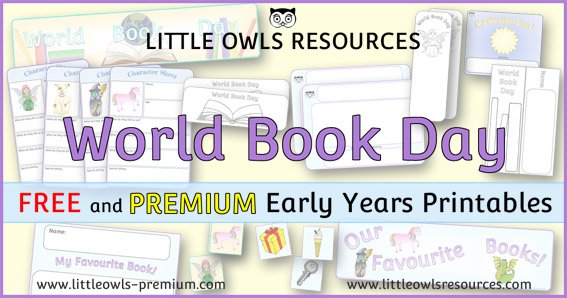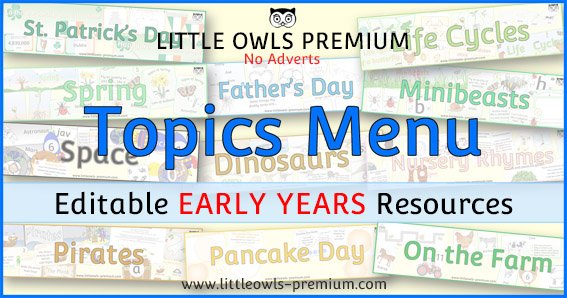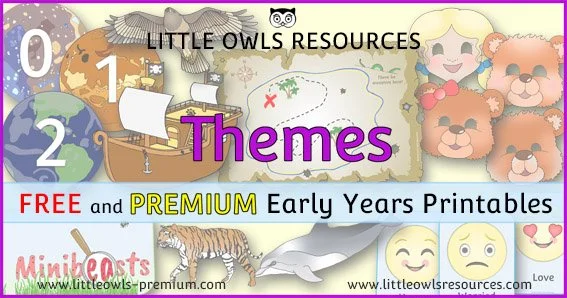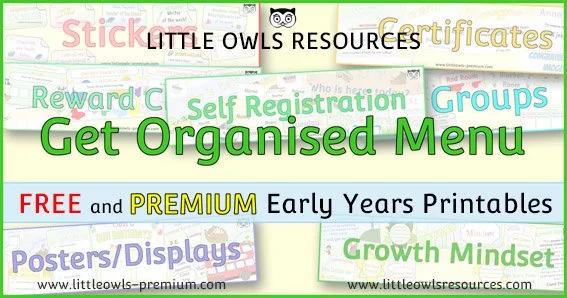Our Favourite Storybooks
Page under construction - resources coming soon!
PLEASE SCROLL DOWN TO BROWSE ‘OUR Favourite storybooks’ & Supporting RESOURCES…
SECTIONS ON THIS PAGE:
Storybooks listed in alphabetical order - Under construction!
The section for each book contains the name of the book, its author and illustrator, a brief review/summary of the story plot and suggested learning opportunities including theme and activity ideas. For each book we have also compiled a collection of related teaching resources we have on our site which cover similar themes. (Scroll through each story resource gallery and related topics to access free sample resources.)
Additional pages/topics/themes you may be interested in - Traditional/Fairy Tales
If you are not a member already, become a ‘Free Access’ member here. This will give you access to resources within the ‘Free Sample Resources’ sections at the top of most pages and ‘Special Dates Calendars’. Some whole topics are even free! Find out more about all of our membership options here. If you are already a member… thank-you! x
Please note that both Editable (docx file) and non-editable (pdf file) versions are available for all resources on this page. (Editable files require Microsoft Word to work at optimum level and Non-Editable files require a pdf viewer.)
OUR Favourite storybooks
Listed in alphabetical order (Please note that the printables (including original artwork contained within) have been created by our team at Little Owls Resources. The products are in no way endorsed by the authors or publishers of any related stories, books or products. We have gathered together resources from within our catalogue which we hope you will find useful to support learning surrounding each story. In addition, please note that as an Amazon Associate we earn from qualifying purchases.)
Aaaarrgghh, Spider!
Lydia Monks (Author & Illustrator)
Summary:
Heart warming story about a spider who wants more than anything to be a family pet. The trouble is that any time he is seen by the family he is met with cries of the repeating refrain ‘Aaaarrgghh, spider!” This humorous story explores overcoming fears, embracing difference, and finding friendship in unexpected places. With bold illustrations and a simple, engaging narrative, it’s a favourite for young readers.
Learning Opportunities (including theme and activity ideas):
Children join in with repeated refrain
Themes (the spider wants to impress the family by showing how good they are at each thing): dancing, washing/cleaning themselves, eating independently
Outdoor Artwork (the spider impresses the family at the end with the sparkly webs they have made in the garden)
Pets - What makes a good pet? Personal opinions and preferences
Understanding emotions and empathy (PSED) – Explore how the spider might feel and how the family reacts
Fear and overcoming it – Talk about things we’re scared of and how feelings can change
Minibeast topic – Learn about spiders and their role in nature
Fine motor skills – Create webs with yarn, threading activities, or spider crafts
Creative expression – Paint or draw spider webs, decorate spiders, build homes
Speech and storytelling – Use props or puppets to retell the story
Descriptive language – Talk about how the spider moves, what it looks like, where it lives
Counting (Maths) – Count legs or eyes on spiders; use spiders in simple maths games
Positional language – Where is the spider? (e.g., under the table, on the chair)
Inclusivity, friendship and overcoming stereotypes – Explore how everyone has a place and can be accepted
Relevant themes and resources
CLICK HERE to view teaching and learning resources we have on our site which cover similar themes and are tagged as they suggest reading this book alongside their use. Or alternatively scroll through the gallery of images below. (See disclaimer above.)
If you do not have a copy of this book, you can purchase it here.
A Squash and a Squeeze
Julia Donaldson (Author), Axel Scheffler (Illustrator)
Summary:
A little old lady complains that her house is too small — it's such a squash and a squeeze! But when a wise old man suggests bringing in a hen, a goat, a pig, and a cow, things become even more chaotic… until she learns a valuable lesson about gratitude and perspective. This funny, rhyming story is full of repetition, humour, and charm. Fun rhythmic story which tells the tale of a lady who sees the size of her home through fresh eyes once its been filled with farmyard animals.
Learning Opportunities (including theme and activity ideas):
Farm animals – Learn animal names, sounds, and basic needs
Gratitude - being grateful for all of the good in our lives - focusing on the positives
Rhyme and repetition – Builds early literacy skills, memory, and phonological awareness - children join in with repeated refrain
Story sequencing – What animals came in and in what order? Great for retelling activities
Speech and expression – Encourage children to repeat phrases with expression or act out the story
Size and space (Maths) – Explore concepts like big/small (size comparison), full/empty, more/less
Farm animals – Learn animal names, sounds, and basic needs
Feelings and empathy (PSED) – Talk about frustration, problem-solving, and appreciating what we have
Creative play – Set up a small-world house or role-play the story
Descriptive language – Talk about how the house feels before and after the animals leave
Problem-solving – What could the old lady have done differently? What advice would you give her?
Music and rhythm – Turn the rhyming parts into a song or chant
Relevant themes and resources
CLICK HERE to view teaching and learning resources we have on our site which you may find helpful when enjoying this story. (See disclaimer above.)
If you do not have a copy of this book, you can purchase it here.
Commotion in the ocean
Giles Andreae (Author), David Wojtowycz (Illustrator)
Summary:
Wonderfully rhythmic and rhyming ocean adventure book. Meet a new sea creature on each page. Dive under the sea with this colourful collection of short, rhyming poems about a variety of sea creatures — from whales and sharks to jellyfish and crabs! Each page introduces a new marine animal with fun facts and playful language, making it an ideal introduction to ocean life for young children.
Learning Opportunities (including theme and activity ideas):
Rhyme and rhythm – Perfect for developing early phonological awareness and a love of language
Animal facts – Learn simple, engaging facts about ocean creatures
Sea life topic – Explore marine habitats and the animals that live there
Art and creativity – Create under-the-sea scenes, junk model sea creatures, or collage waves
Speech and drama – Perform poems aloud or act out animal movements
Counting and sorting (Maths) – Count creatures, group by type or features (e.g., fins, tentacles)
Descriptive language – Use adjectives to describe how sea creatures move, sound and look
Geography and science – Talk about oceans, coral reefs, and environmental awareness (e.g. plastic pollution)
Fine motor skills – Activities like cutting out fish shapes, threading jellyfish tentacles
PSED – Confidence and curiosity – Encourage wonder, discussion, and asking questions about nature
Role-Play/Movement - Move like each animal
Relevant themes and resources
CLICK HERE to view teaching and learning resources we have on our site which you may find helpful when enjoying this story. (See disclaimer above.)
If you do not have a copy of this book, you can purchase it here.
Dear Zoo
Rod Campbell (Author & Illustrator)
Summary:
This classic lift-the-flap story follows a child who writes to the zoo asking for a pet. One by one, animals are sent — but they’re too big, too fierce, or too naughty! Eventually, the perfect pet arrives. With its repetitive structure, simple language, and interactive flaps, Dear Zoo is a firm favourite for introducing young children to animals and early storytelling. Classic children’s book which allows the reader to image what it would be like to have various zoo animals as pets!
Learning Opportunities (including theme and activity ideas):
Animal names and characteristics – Explore different animals, their sizes, sounds, and traits (big, tall, fierce, grumpy, scary, naughty, jumpy, perfect)
Lift-the-flap interaction – Develops fine motor skills and prediction skills
Repetitive language and structure – Supports early reading and sentence construction - children join in with repeated refrain
Speech and vocabulary development – Encourage children to describe or name the animals
Story sequencing – Retell the story in order using props, pictures, or puppets
Size and comparison (Maths) – Discuss which animals are too big, too tall, or just right
Feelings and preferences (PSED) – Talk about likes/dislikes and choosing what’s best for you
Creative expression – Design a pet, draw a zoo scene, or make lift-the-flap books
Role-play – Pretend to work at a zoo or be an animal receiving a new home - move/act like each animal
Phonics awareness – Use the animal names and descriptive words for sound recognition
Pets - Learn about the different pets people have and how to take care of them
Letters and Parcels/Post Office (Book based on someone writing a letter to the zoo asking them to send a pet.) - Learn about how we post letters/parcels - Role-play post office
Relevant themes and resources
CLICK HERE to view teaching and learning resources we have on our site which you may find helpful when enjoying this story. (See disclaimer above.)
If you do not have a copy of this book, you can purchase it here.
Elmer (The Patchwork Elephant)
David McKee (Author & Illustrator)
Summary:
Elmer is no ordinary elephant — he’s patchwork and colourful, and full of fun! While the other elephants are grey, Elmer’s bright colours make him stand out. At first, he wonders if being different is a problem, but soon realises that being unique is something to celebrate. This thoughtful and humorous story promotes self-acceptance and celebrates diversity. Beautiful story which demonstrates in an amazingly child friendly way the importance of individuality, valuing diversity and self worth.
Learning Opportunities (including theme and activity ideas):
Personal, Social & Emotional Development (PSED) – Explore themes of identity, self-confidence, and celebrating differences
Self Worth and Awareness - Elmer goes on a journey first feeling a bit sad that he is different, but by the end he can see that he has an important role in the herd
Colours and patterns – Learn colour names, sort and match colours, create patchwork patterns (mainly yellow, orange, red, pink, purple, blue, green, black and white)
Animals in the Jungle (When Elmer goes for a walk) - learn about and role-play being the different animals
Jokes - Elmer makes the herd smile and laugh…can you make people laugh?
Art and design – Create your own Elmer using collage, paint, fabric, or recyclable materials
Descriptive language – Talk about what makes Elmer unique and describe his patchwork look
Story sequencing and retelling – Use puppets, props, or pictures to act out the story
Empathy and kindness – Discuss how Elmer feels and how others react to him
Speech and communication – Encourage children to share what makes them special
Diversity and inclusion – Link to discussions about similarities and differences in people - valuing individuality and diversity
Maths – Count Elmer’s colours, make shape patterns, or create symmetrical designs
Creative movement – Move like elephants, create a parade, or play music to match Elmer’s cheerful character
Relevant themes and resources
CLICK HERE to view teaching and learning resources we have on our site which you may find helpful when enjoying this story. (See disclaimer above.)
If you do not have a copy of this book, you can purchase it here.
Farmyard Hullabaloo
Giles Andreae (Author), David Wojtowycz (Illustrator)
Summary:
Engaging rhymical rhyme based book taking the reader on a journey through the farm. This lively collection of rhyming poems introduces a whole host of friendly farm animals — from the noisy cockerel to the cheeky goat! Each animal has its own playful poem, bursting with personality and humour. Bright, bold illustrations bring the farm to life, making it a fun and engaging read for young children.
Learning Opportunities (including theme and activity ideas):
Rhyming and rhythm – Develop phonological awareness through playful, predictable rhymes
Farm animal knowledge – Learn names, sounds, habitats, and roles of farm animals
Farm Animal Sounds (Phase 1 Phonics/Letters and Sounds) e.g. moo, cock-a-doodle-doo
Creative expression – Draw or make masks of favourite farm animals, or create animal movements - role-play being the different animals - small world play
Story retelling – Recreate the farm scene or act out different animals’ poems
Speech and listening – Recite poems aloud, listen for rhymes, and encourage expressive reading
Descriptive language – Talk about animal characteristics and actions (e.g., “woolly,” “muddy,” “clucking”)
Understanding the world – Explore life on a farm, how animals help us, and how we care for them
PSED – Talk about being part of a community, working together, and caring for living things
Maths – Count animals, sort them by size/type, or match sounds to pictures
Music and movement – Make animal sounds or play instruments to accompany the poems
Relevant themes and resources
CLICK HERE to view teaching and learning resources we have on our site which you may find helpful when enjoying this story. (See disclaimer above.)
If you do not have a copy of this book, you can purchase it here.
owl Babies
Martin Waddell (Author), Patrick Benson (Illustrator)
Summary:
Beautiful tale about three owlets who wake up to find their mother has gone. Three baby owls — Sarah, Percy, and Bill — wake up one night to find their mother gone. As they wait in the dark woods, they each react differently to the uncertainty. Will she come back? This beautifully told and illustrated story gently explores separation anxiety, reassurance, and the bond between parent and child.
Learning Opportunities (including theme and activity ideas):
Feelings and emotions (PSED) – Explore themes of worry, comfort, and trust through the owlets’ responses - could be read during times of transition and to ease separation anxiety
Speech and language – Encourage discussion with repeated phrases like “I want my mummy!”
Story sequencing and retelling – Use puppets, story stones, or pictures to act out the narrative
Understanding nocturnal animals – Learn about owls and other creatures of the night
Birds - Expand to learning about different bird species and role-play being different birds
Science and nature – Discuss where owls live, what they eat, and how they care for their babies
Descriptive language – Explore the setting (e.g., “dark,” “quiet,” “soft”) and the owlets’ feelings
Role-play and drama – Recreate the forest scene or play being the owl family
Fine motor skills – Create owl crafts using feathers, paper plates, or recycled materials
Maths – Count the owls, compare sizes (big, middle, small), or match owl shapes
Literacy – Recognise and repeat phrases, predict what might happen next, or write simple speech bubbles
Life Cycles/Baby Animals - Birds come from eggs
In the Woods - learn about the habitat and what wildlife lives there
Relevant themes and resources
CLICK HERE to view teaching and learning resources we have on our site which you may find helpful when enjoying this story. (See disclaimer above.)
If you do not have a copy of this book, you can purchase it here.
Sharing a Shell
Julia Donaldson (Author), Lydia Monks (Illustrator)
Summary:
Wonderfully rhythmic and rhyming tale with some alliteration thrown in, about a crab who finds a shell for a home but he doesn’t want to share it. This rhyming seaside story follows a little hermit crab who finds a lovely shell to live in. Along come a bristle worm and an anemone, and through some ups and downs, the trio learns that life is better when you work together. With vibrant illustrations and catchy rhymes, this tale gently explores friendship, cooperation, and the joys of sharing.
Learning Opportunities (including theme and activity ideas):
Rhyme and rhythm – Encourages phonological awareness and enjoyment of language
Alliteration and descriptive language – Use of playful sound patterns to explore rich vocabulary
Speech and drama – Ideal for retelling, role-play, and puppet shows
Seaside and beach topic – Explore coastal habitats and what lives in rockpools
Science and nature – Learn about hermit crabs, anemones, and sea worms
Personal, Social & Emotional Development (PSED) – Discuss friendship, conflict resolution, and sharing
Maths – Counting sea creatures, sorting shells by size/shape, or sharing out resources in play
Art and creativity – Create seaside collages, shell patterns, or sea creature crafts
Teamwork activities – Engage in group tasks where each child contributes a different role to benefit everyone/shared goal
Environmental awareness – Introduce caring for the seaside and marine life
Relevant themes and resources
CLICK HERE to view teaching and learning resources we have on our site which you may find helpful when enjoying this story. (See disclaimer above.)
If you do not have a copy of this book, you can purchase it here.
Superworm
Julia Donaldson (Author), Axel Scheffler (Illustrator)
Summary:
Superworm is a hero like no other — he’s long, strong, and always ready to help his friends! Whether he’s rescuing Baby Toad or forming a skipping rope for bees, Superworm is the go-to helper. But when the evil Wizard Lizard captures him, it’s time for his friends to repay the favour. This rhyming adventure highlights bravery, teamwork, and kindness.
Learning Opportunities (including theme and activity ideas):
Rhyme and rhythm – Rich in rhyming couplets; supports early phonological awareness and reading
Repeating chant and alliteration - Join in with repeating chant and notice alliteration
Minibeasts topic – Learn about worms, insects, and other garden creatures
Science and nature – Explore habitats, food chains, and the role of worms in soil health
Descriptive language – Use story vocabulary to describe Superworm and his powers
Creative storytelling – Act out scenes, create new “Superworm” adventures, or invent your own bug superheroes
Speech and drama – Use puppets or role-play to retell the story with expression
Art and design – Make Superworm puppets, bug collages, or build garden habitats
Personal, Social & Emotional Development (PSED) – Explore friendship, helping others, teamwork and bravery when standing up to bullies
Maths – Measure worms (compare long/short), count legs on bugs, or sort creatures by features
Problem-solving and teamwork – Create obstacle courses or challenges where teamwork is needed, like in the story where his friends all work together with different roles to save him
Relevant themes and resources
CLICK HERE to view teaching and learning resources we have on our site which you may find helpful when enjoying this story. (See disclaimer above.)
If you do not have a copy of this book, you can purchase it here.
The Gruffalo
Julia Donaldson (Author), Axel Scheffler (Illustrator)
Summary:
A clever little mouse takes a stroll through the deep, dark wood and outsmarts a series of predators by inventing a fearsome creature — the Gruffalo! But what happens when the mouse comes face to face with his imaginary monster? This rhyming story is packed with suspense, humour, and a celebration of brain over brawn.
Learning Opportunities (including theme and activity ideas):
Rhyme – Engaging, rhythmic language that supports early phonological awareness
Descriptive language – Rich adjectives to describe both setting and characters
Sequencing and prediction – What happens next? Who will the mouse meet?
Speech and role-play – Fantastic for retelling, character voices, and acting out scenes
Forest/Woodland topic – Exploring habitats, animals, and nature walks
Creativity – Drawing or making their own imaginary creature
Problem-solving and critical thinking – How does the mouse stay safe?
Confidence and courage (PSED) – Even small characters can be brave!
Friendship and emotions – What makes someone scary? How do others feel?
Relevant themes and resources
CLICK HERE to view teaching and learning resources we have on our site which you may find helpful when enjoying this story. (See disclaimer above.)
If you do not have a copy of this book, you can purchase it here.
The Gruffalo’s Child
Julia Donaldson (Author), Axel Scheffler (Illustrator)
Summary:
One wild and windy night, the Gruffalo’s child sets off into the deep dark wood — against her father’s warning — to find the “big bad mouse” her father fears. Along the way, she meets familiar woodland creatures, but none seem quite as scary as the stories suggest. A beautifully told tale of curiosity, bravery, and clever storytelling, full of rhyme and humour.
Learning Opportunities (including theme and activity ideas):
Rhyme and rhythm – Support phonological awareness and early reading skills
Sequencing – Revisit the journey and order the characters she meets
Comparison – Link to The Gruffalo story: What’s the same? What’s different?
Descriptive language – Explore settings (e.g. deep dark wood, snow, night)
Winter and woodland themes – Nature walks, seasonal learning, habitats
Emotions and feelings (PSED) – Talk about fear, bravery, curiosity, and safety
Speech and role-play – Act out the story or retell it using puppets or props
Problem-solving – How does the mouse use his brain to stay safe again?
Art and creativity – Make footprint trails, Gruffalo’s child masks, or snowy scenes
Story mapping – Create a visual map of the Gruffalo’s child’s adventure
Relevant themes and resources
CLICK HERE to view teaching and learning resources we have on our site which you may find helpful when enjoying this story. (See disclaimer above.)
If you do not have a copy of this book, you can purchase it here.
the Snail and the Whale
Julia Donaldson (Author), Axel Scheffler (Illustrator)
Summary:
A tiny snail longs to see the world — so she hitches a ride on the tail of a great big whale. Together, they travel across the globe, witnessing natural wonders and overcoming danger. When trouble strikes, the small but determined snail proves that even the littlest creature can make a big difference. A beautifully illustrated story about courage, adventure, and unlikely friendship.
Learning Opportunities (including theme and activity ideas):
Rhyme and rhythm – Enhances listening, language development and early literacy
World and nature exploration – Oceans, mountains, volcanoes, icebergs, wildlife
Map work and geography – Track their journey around the world
Size and scale – Big and small, opposites, comparisons
Courage and helping others (PSED) – Small voices can have a big impact
Speech and storytelling – Retelling from different perspectives (snail, whale)
Environmental awareness – Introduce ocean protection and marine life
Teamwork and friendship – How two very different characters support each other
Creative expression – Under-the-sea art, snail trails, role-play adventures
Problem-solving and resilience – How the snail thinks creatively in a crisis
Relevant themes and resources
CLICK HERE to view teaching and learning resources we have on our site which you may find helpful when enjoying this story. (See disclaimer above.)
If you do not have a copy of this book, you can purchase it here.
The Tiger Who Came to Tea
Judith Kerr (Author & Illustrator)
Summary:
Sophie and her mummy are having tea when an unexpected guest arrives — a big, stripy tiger with a huge appetite! He eats all the food, drinks everything in sight, and leaves nothing behind. A charming and whimsical classic that invites children to suspend disbelief, giggle, and imagine the unexpected.
Learning Opportunities (including theme and activity ideas):
Story sequencing – What happened first? Next? How did the story end?
Food and drink – Set up a tea party role-play area or make a shopping list
Manners and social skills (PSED) – Discuss polite behaviour and hospitality
Imaginative play – Reenact the story or invent a new animal guest
Speech and vocabulary – Repeating key phrases; describing what the tiger did
Art and design – Draw the tiger, decorate tea sets, design a new tea menu
Counting and capacity (Maths) – How much food did the tiger eat? Use real or toy items to measure and count
Home life and routines – Explore everyday routines and how they might change with a surprise guest
Feelings and emotions – How do Sophie and her mummy feel at different points?
Literacy links – Encourage early reading by using repetitive text and familiar phrases from the story
Relevant themes and resources
CLICK HERE to view teaching and learning resources we have on our site which you may find helpful when enjoying this story. (See disclaimer above.)
If you do not have a copy of this book, you can purchase it here.
The Very Hungry Caterpillar
Eric Carle (Author & Illustrator)
Summary:
This much-loved classic follows the journey of a tiny caterpillar as he eats his way through a variety of foods, grows bigger and bigger, and eventually transforms into a beautiful butterfly. With its repetitive structure, colourful illustrations, and gentle rhythm, it’s perfect for young learners exploring growth, change, and the natural world.
Learning Opportunities (including theme and activity ideas):
Days of the week – Reinforce order and vocabulary through the caterpillar’s eating journey
Counting and numbers (Maths) – Count how many foods he eats each day
Life cycle of a butterfly – Introduce early science concepts around metamorphosis
Healthy eating – Discuss which foods are good for our bodies and which are treats
Sequencing and storytelling – What did the caterpillar eat first? What came next?
Repetition and rhythm – Supports early literacy, memory, and language development
Fine motor skills – Cut and stick food items, lace-up caterpillars, or finger painting
Days and time concepts – Learn about today, tomorrow, and yesterday
Creativity – Make butterfly crafts, fruit prints, or collages in the style of Eric Carle
Feelings and self-regulation (PSED) – Talk about feeling full, tired, excited, or surprised
Relevant themes and resources
CLICK HERE to view teaching and learning resources we have on our site which you may find helpful when enjoying this story. (See disclaimer above.)
If you do not have a copy of this book, you can purchase it here.
Whatever Next!
Jill Murphy (Author & Illustrator)
Summary:
Baby Bear wants to go to the moon before bath time! Using a cardboard box, some boots, and a colander for a helmet, he blasts off on an imaginative space adventure. He flies past the stars, enjoys a picnic on the moon, and returns home just in time. A gentle, humorous story that celebrates imagination, play, and the wonder of space — all through a child’s eyes.
Learning Opportunities (including theme and activity ideas):
Imaginative play and role-play – Build rockets, dress up, and create moon picnics
Story sequencing – What did Baby Bear do first, next, and last?
Space and the moon – Introduce basic space concepts (planets, stars, gravity)
Everyday objects as props – Encourage creativity using household items for play
Speech and storytelling – Retell the story or create new adventures for Baby Bear
Art and craft – Make moon pictures, rockets, or space helmets
Understanding routines – Talk about bedtime, bath time, and daily transitions
Feelings and independence (PSED) – Explore curiosity, bravery, and doing things on your own
Positional language – Use terms like over, under, up, down, inside, and outside
Relevant themes and resources
CLICK HERE to view teaching and learning resources we have on our site which you may find helpful when enjoying this story. (See disclaimer above.)
If you do not have a copy of this book, you can purchase it here.
What the Ladybird Heard
Julia Donaldson (Author), Lydia Monks (Illustrator)
Summary:
On a quiet farm, two sneaky thieves plan to steal the prize cow — but the tiniest creature on the farm has a clever plan to stop them! This rhyming tale follows a brave little ladybird who hears everything and works with the animals to foil the robbery. A lively story full of sound effects, animal voices, and teamwork.
Learning Opportunities (including theme and activity ideas):
Rhyming and rhythm – Great for phonological awareness and early reading skills
Animal sounds and names – Explore farm animals and the noises they make
Listening skills – Spot the rhymes, follow the story closely, sound recognition
Mapping and direction – Draw or follow a map of the farm or the robbers’ route
Teamwork and problem-solving – Discuss how the animals work together to stop the thieves
Speech and storytelling – Act out the story using animal puppets or masks
Creative play – Build a small world farm or role-play the story in an outdoor setting
Positional language – Reinforce terms like next to, behind, across, in front of
Understanding right and wrong (PSED) – Discuss good choices, helping others, and consequences
Art and design – Create your own sparkly ladybird or decorate a farm scene collage
Relevant themes and resources
CLICK HERE to view teaching and learning resources we have on our site which you may find helpful when enjoying this story. (See disclaimer above.)
If you do not have a copy of this book, you can purchase it here.
Further pages you may be interested in…
SEARCH ‘LITTLE OWLS-PREMIUM’ USING THE FOLLOWING MENU BUTTONS…
Please note that as an Amazon Associate we earn from qualifying purchases.
